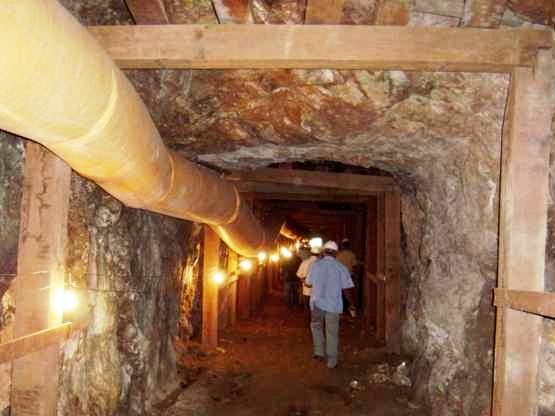RIO DE JANEIRO, BRAZIL – A mining project considered a priority by the Brazilian government could turn the country into a uranium exporter and reduce its fertilizer import needs, if successful.
The country, which currently imports uranium for its nuclear power plants and imports most of its fertilizer demand, may become more self-sufficient with a US$400 million (R$2 billion) project in the Northeast region, according to the consortium created to exploit the deposit.
The state-owned Indústrias Nucleares do Brasil (INB), which holds the monopoly of uranium production in Brazil, has formed a consortium with the local fertilizer company Galvani for the Santa Quitéria phosphate-uranium project.

The INB expects to extract approximately 2,100 tons of uranium concentrate per year from the deposit, while it needs around 750 tons to supply its nuclear power plants. Adding nominal capacity to another deposit exploited by the INB, Brazil will produce some 2,400 tons of uranium ore concentrate per year once Santa Quitéria reaches its total capacity in 2026.
“This corresponds to four percent of world uranium production,” said INB’s CEO Carlos Freire in a telephone interview. “We can be a player with an interesting responsibility”.
The Fukushima Daiichi disaster and the high development costs maintained the number and capacity of nuclear plants virtually stable in the past decade, with excess supply in the uranium markets.
Nevertheless, the price of U3O8 uranium reached its peak in four years in May, following supply cuts in Canada and Kazakhstan, although it has since retreated due to lower demand. In the long term, the industry is attracting efforts to meet ambitious carbon targets that could boost demand for nuclear energy.
Initially, uranium from Santa Quitéria is expected to flow to the INB’s nuclear plants, although the company is holding talks with the government to sell the surplus abroad, Freire said.
Santa Quitéria has been included in the government’s Investment Partnership Program, known as PPI, for projects considered a priority. Bringing in more partners, including fertilizer consumers, is being considered to finance the investment, while the family controlling Galvani would retain the majority stake.
The project’s production of phosphate fertilizers is estimated at 750,000 tons per year in 2026, which is equivalent to about 20 percent of Brazil’s imports of phosphate fertilizers last year. The country – the largest exporter of soy, coffee, and sugar – produces only 30 percent of its consumption of phosphate fertilizers.
“This is a major strategic deficiency for the country,” said Ricardo Neves, Galvani’s CEO, in a telephone interview. Galvani closed a joint venture with Yara International ASA in Brazil last year.
The Santa Quitéria project, located in the state of Ceará, would meet the growing demand for fertilizers in Brazil’s new agricultural cluster of four contiguous northeastern states – Maranhão, Tocantins, Piauí and Bahia – abbreviated Matopiba. The consortium seeks to leverage the return trips from the ports to the farms to ship the fertilizer.
“It is a region where the production of grains and soybeans is growing fast and will continue to grow with the conversion of pastures into agriculture,” Neves said.
The project also provides for the production of 270,000 tons of dicalcium phosphate, which is used as a food supplement for cattle. This volume represents about 20 percent of the country’s current consumption, which is expected to grow by 78 percent by 2026, according to Sindirações, a group representing the animal feed industry.
Most cattle in Brazil, the world’s largest exporter of beef, are raised on pasture, but the use of feedlots – and supplement as a consequence – is expected to increase in coming years amid growing pressure to contain deforestation.
Brazil’s consumption of dicalcium phosphate is expected to grow by between 3.5 and 4.5 percent annually over the next 15 years, while demand for fertilizers is expected to increase by between three and four percent, Neves said.
“Brazil will continue to grow as an agricultural superpower, and the demand for phosphate will keep up with that,” he said.
Source: Bloomberg

